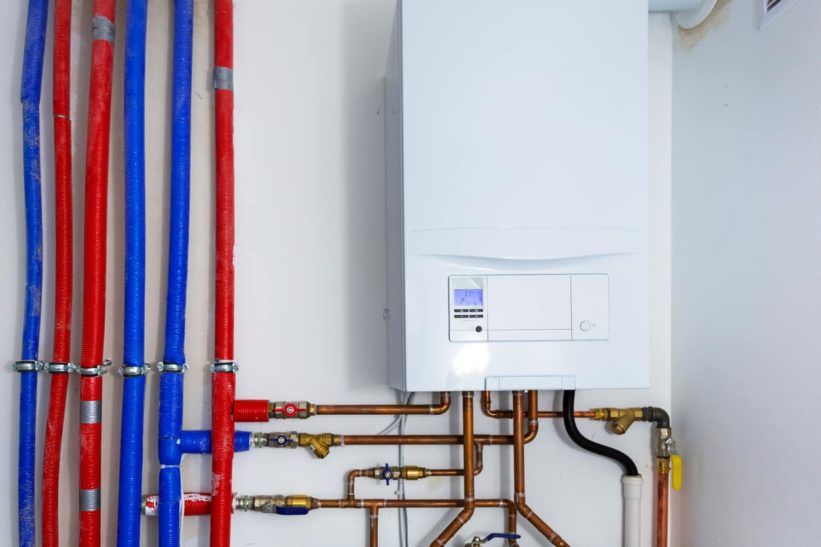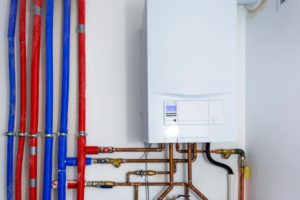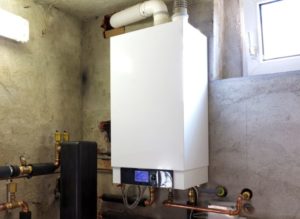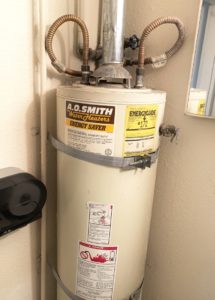With the holidays approaching, you may be expecting loved ones to stay over, filling your home with warmth as you share the holiday season together. However, this also means that your guests will be adding to your hot water usage. These are times when you’re either happy about your new tankless water heater-or you wish you had one.
Why a Tankless Water Heater?
The primary function of a tankless water heater is to heat your water as you need it, rather than continuously heating water that is stored in a tank. Although these types of heaters have been widely used in Europe and Japan for many years, they have recently gained popularity in the US, largely due to their eco-friendly benefits.
Tankless water heaters can save you money on your energy bills, as well as conserve natural gas. Additionally, they typically last 5 to 10 years longer than a tank heater, provide an unlimited supply of hot water, and take up much less space.
Cost-Effectiveness
Installation of tankless water heaters often requires a fairly hefty upfront cost compared to tank heaters, running up to three times more costly. Furthermore, they often require a specialized venting system and upgrades to existing natural gas lines. However, going tankless typically means a substantial amount of money saved in the long run.
Tank vs .Tankless
In order to understand the advantages of a tankless water heater, it helps to understand how one works. However, it’s also important to know how a tank heater works, in order to understand the benefits of how a tankless one operates.
A traditional tank heater heats water continually to keep the water in its tank at a pre-set temperature. ‘Standby Heat loss’ is the term for the energy used to keep the water hot, even when it’s not needed. That means hours and hours of every day are filled with this kind of energy loss.
In contrast, a tankless system avoids standby heat loss by heating water only when you need it. Hence, tankless heaters are also known as ‘on-demand’ water heaters. By eliminating standby heat loss, a tankless water heater runs much more efficiently and sustainably.
How a Tankless Water Heater Works
When you need hot water immediately, a tankless water heater uses what is known as a heat exchanger to raise the temperature of the incoming water. Heat exchangers are also found in HVAC systems, car radiators, and refrigerators. In tankless heaters, heat exchangers move the heat from a gas burner or the electric coils to the water flowing from your faucets. An incoming flow of water activates the exchanger, heating your water to its pre-set temperature immediately.
Whole-House vs. Point-of-Use
There are two varieties of tankless water heaters: point-of-use and whole-house heaters. Whole-house systems are for use on a larger scale, often operating by heating water for multiple outlets, including sinks and showers. Point-of-use water heaters, on the other hand, are smaller and can fit into tighter spaces to heat water for one or two outlets only. However, these water heaters bypass lag time or the amount of time it takes hot water to get to an outlet. Less lag time means less water loss, and there can be up to several minutes of lag time with whole-house systems.
Electric, Propane, or Natural Gas
Tankless water heaters come compatible with either electric, propane, or natural gas heating systems. However, point-of-use tankless heaters are generally electric, while larger whole-house systems are typically natural gas or propane. Which you choose depends on many different factors, including flow rate (the amount of water you need at one-time) and temperature rise (the difference between groundwater temp and desired temp).
Although the initial cost of installing a tankless system is higher than that of a tank water heater, it can provide many benefits, including instant hot water without lag time or standby heat loss and significant money and energy saved in the long run.




